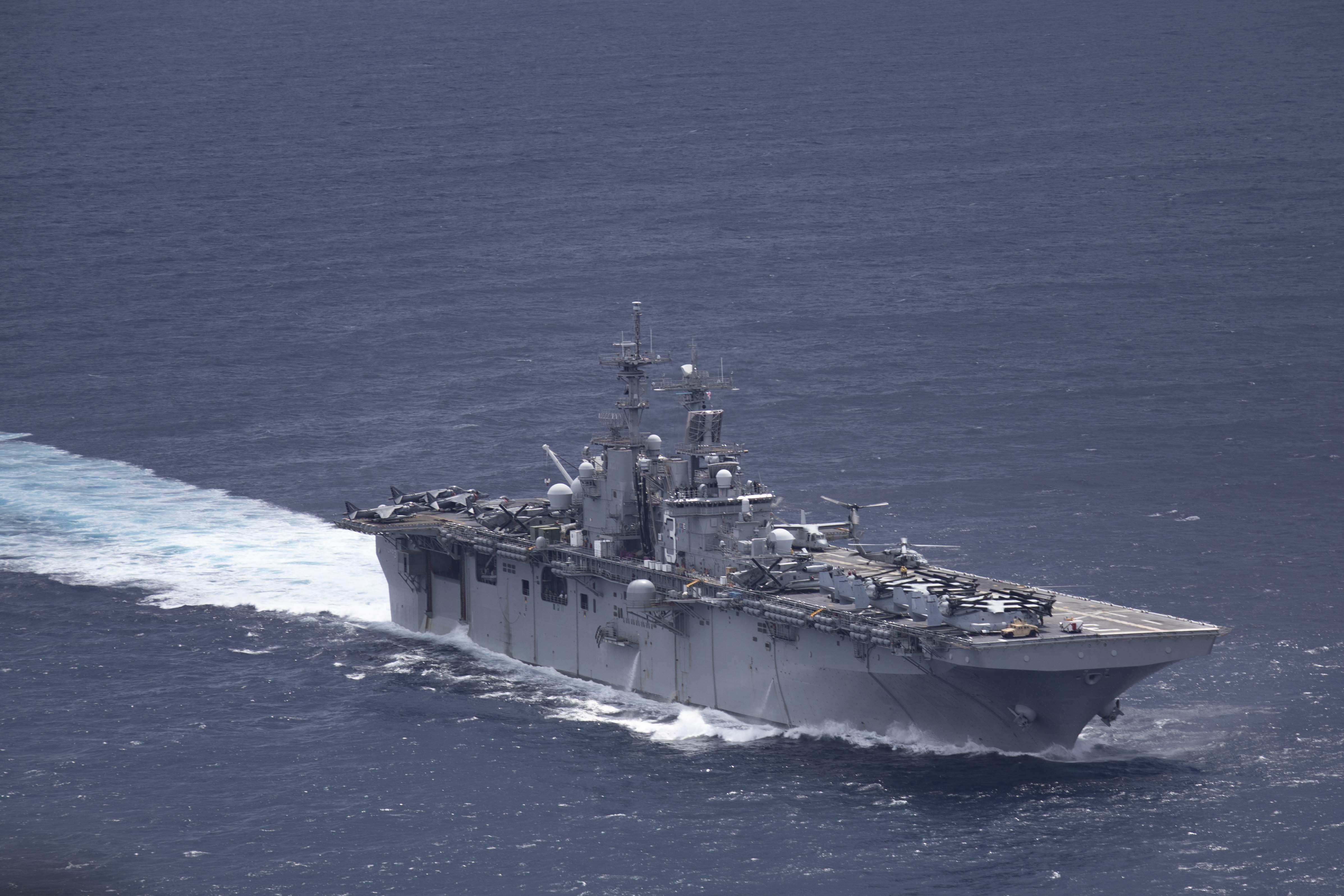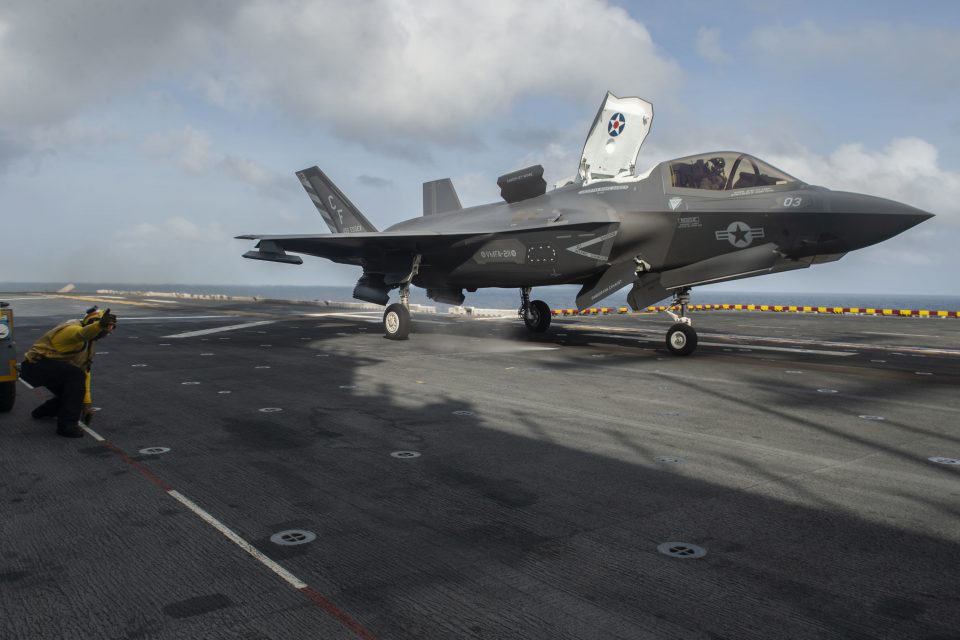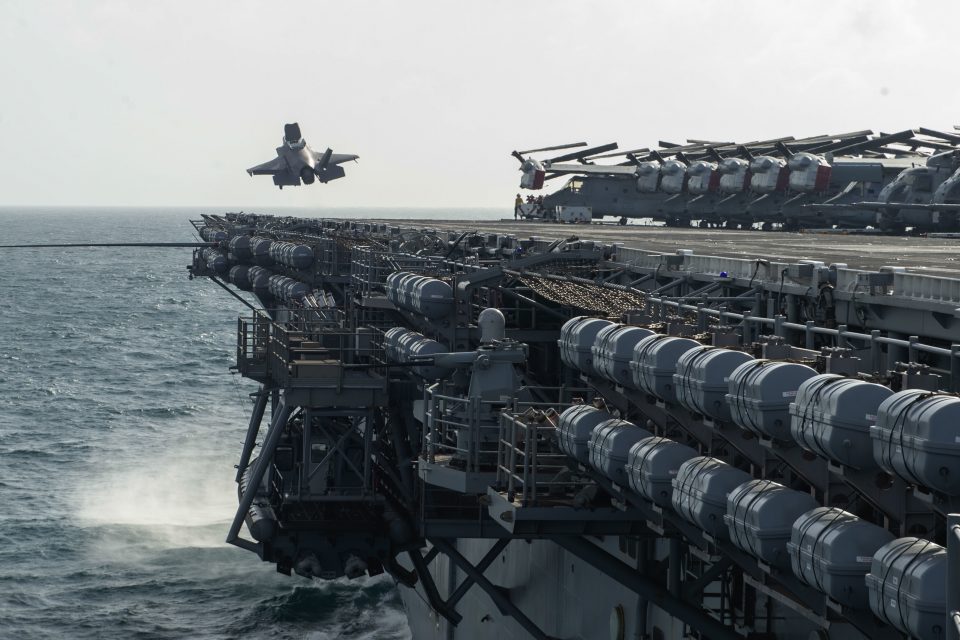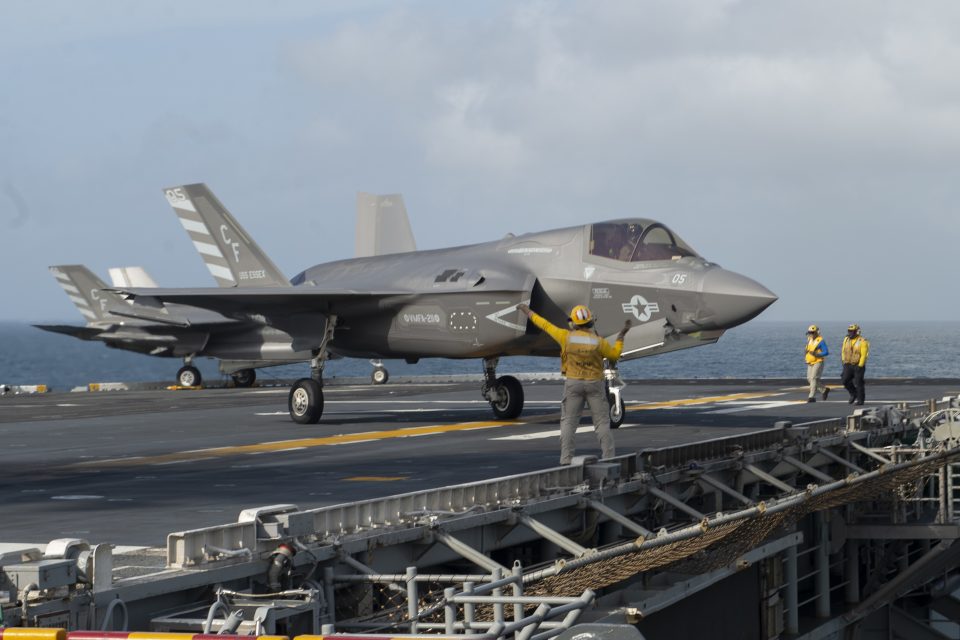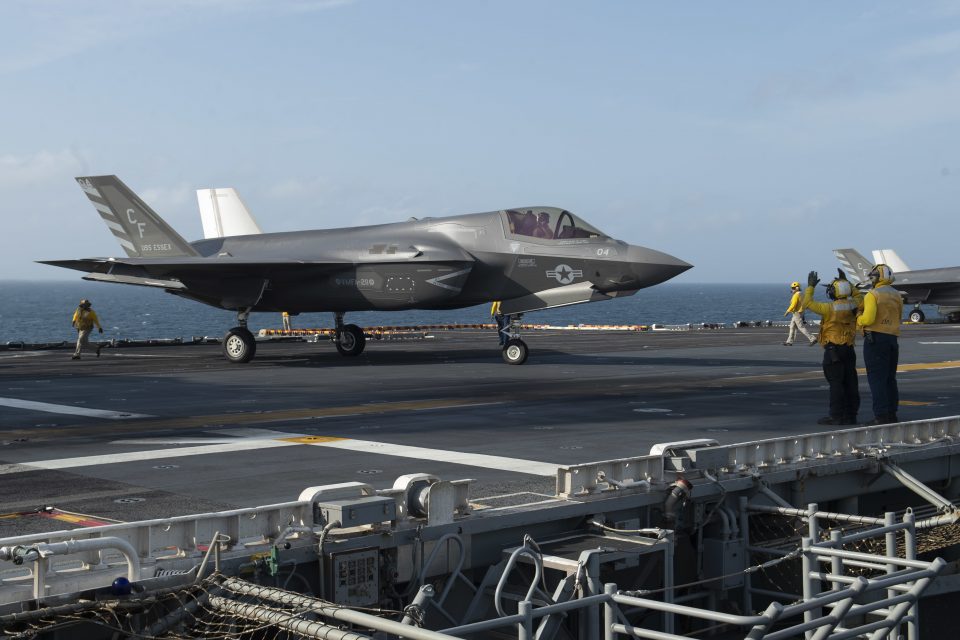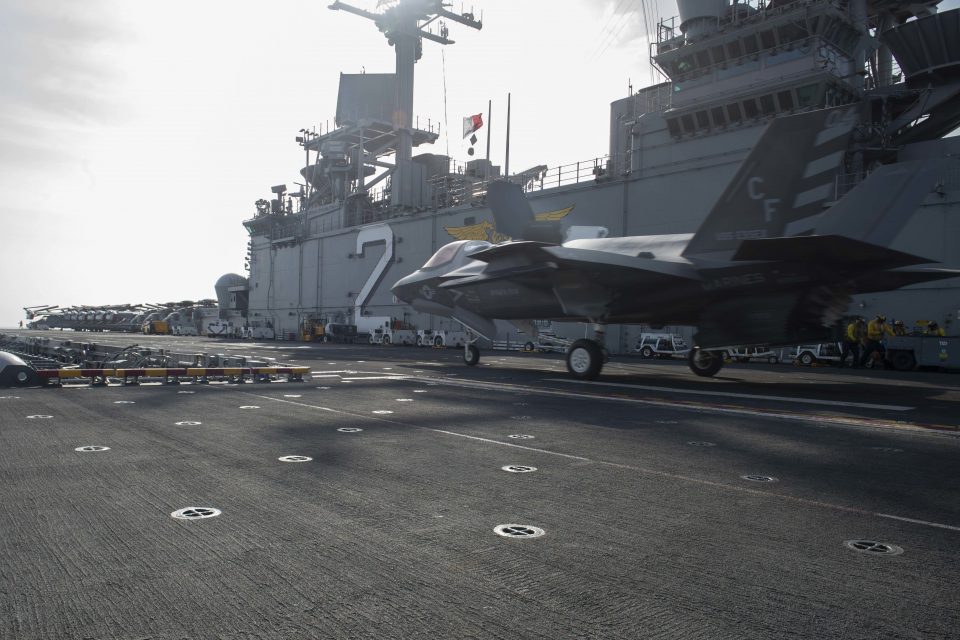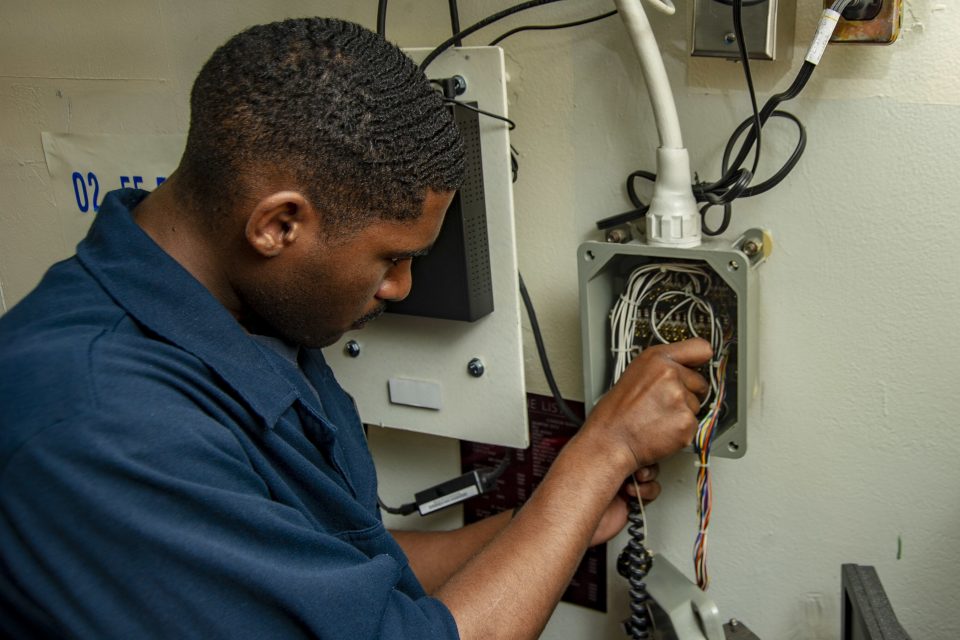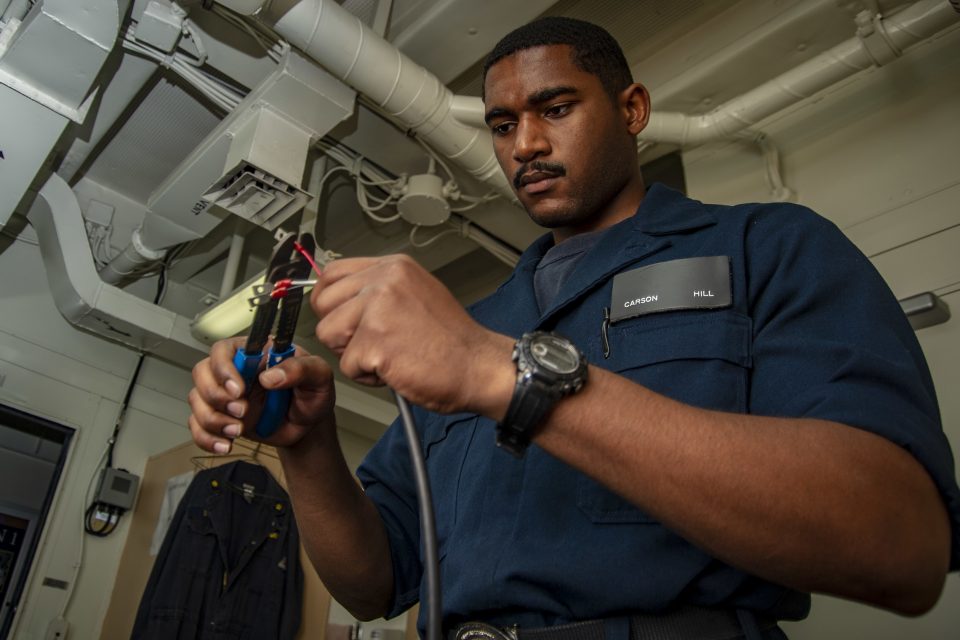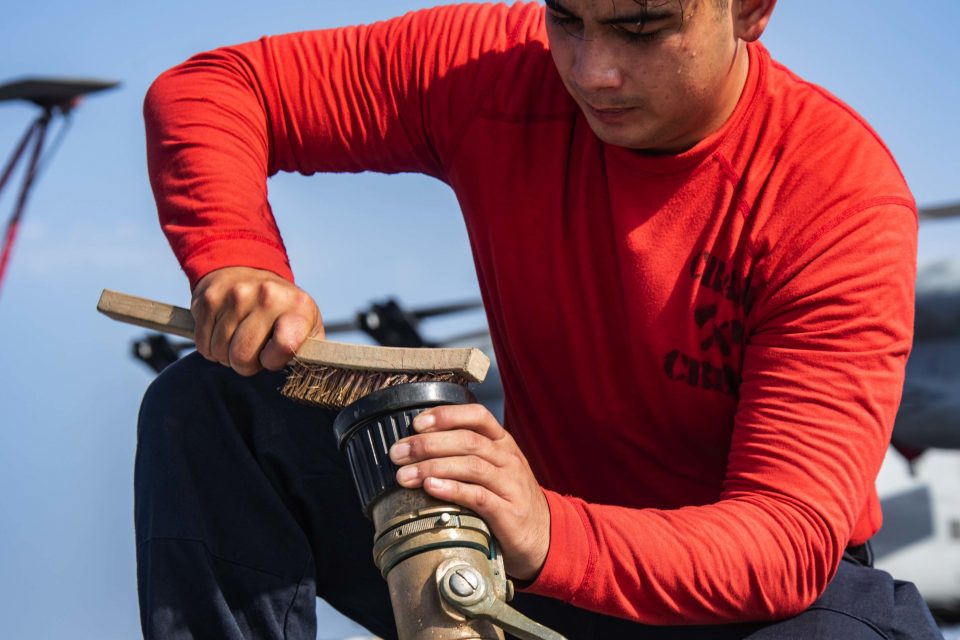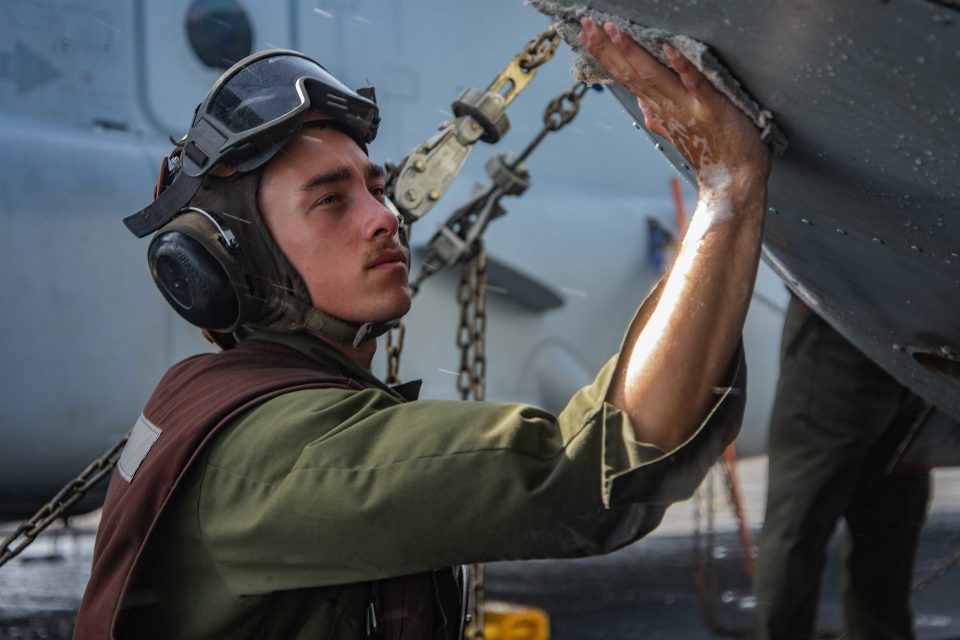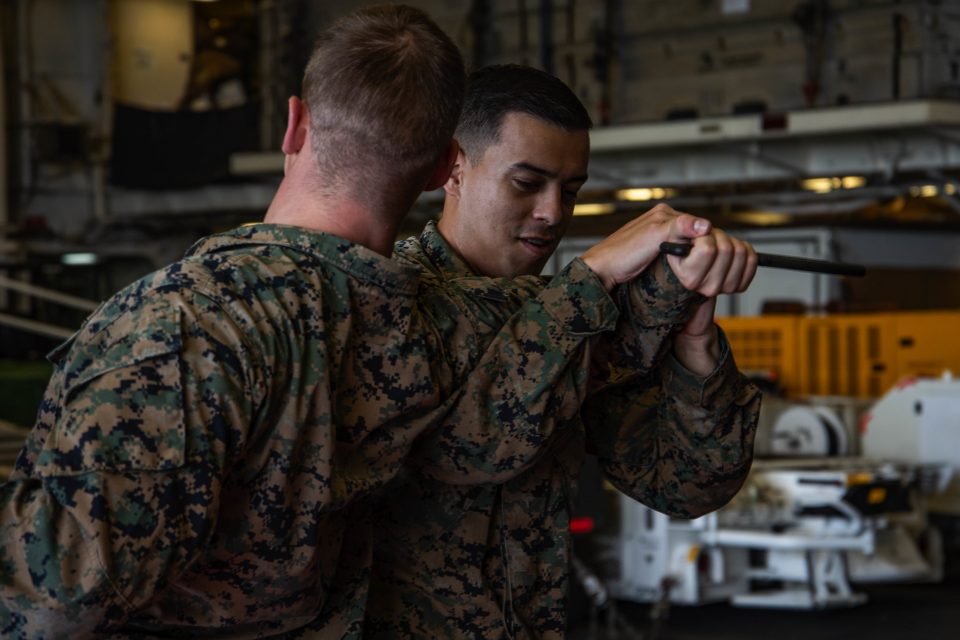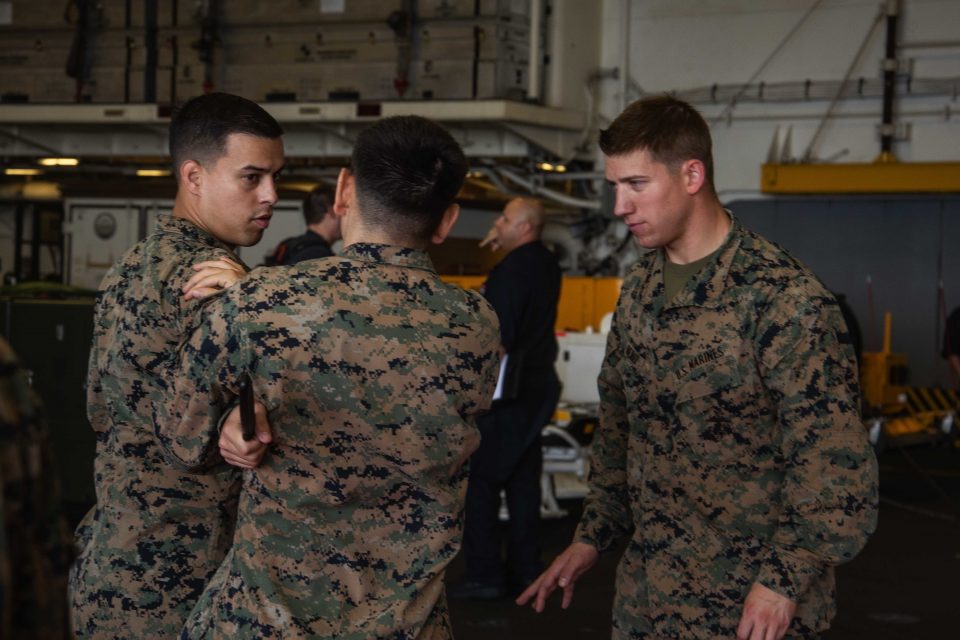By Todd Miller
The 22ndMarine Expeditionary Unit (MEU) VMM-264 Reinforced takes us on board the USS Kearsarge during deployment work-ups
For many, the Marines will always be defined by the tenacious and bloody battles in the South Pacific during WWII.
Rightly so.
Today, these specialists in amphibious warfare and mobility are in transition to an even more mobile, lethal and self-contained capability. Marines are mobile by nature, with “Marine Air-Ground Task Force,” (MAGTF) and “Expeditionary” built into their identity.
One of the consistent (24/7/365) demonstrations of Marine mobility is seen in the ARG/MEU. The U.S. Navy provides specialized assets to facilitate amphibious deployments, the “Amphibious Ready Group” (ARG).
Onboard the USS Wasp with the 22nd MEU from SldInfo.com on Vimeo.
In this case the Kearsarge Amphibious Ready Group (ARG) includes:
- USS Kearsarge (LHD-3), Wasp-Class Amphibious Assault ship
- USS Arlington (LPD 24), San Antonio-Class Amphibious Transport ship.
- USS Fort McHenry (LSD-43), Whidbey Island-Class Dock Landing ship.
The U.S. Navy ARG has a straightforward mission – “deliver the warfighter to theater.” The graphic from Marine Corps literature is an indication of just how much capability is packed on an ARG.
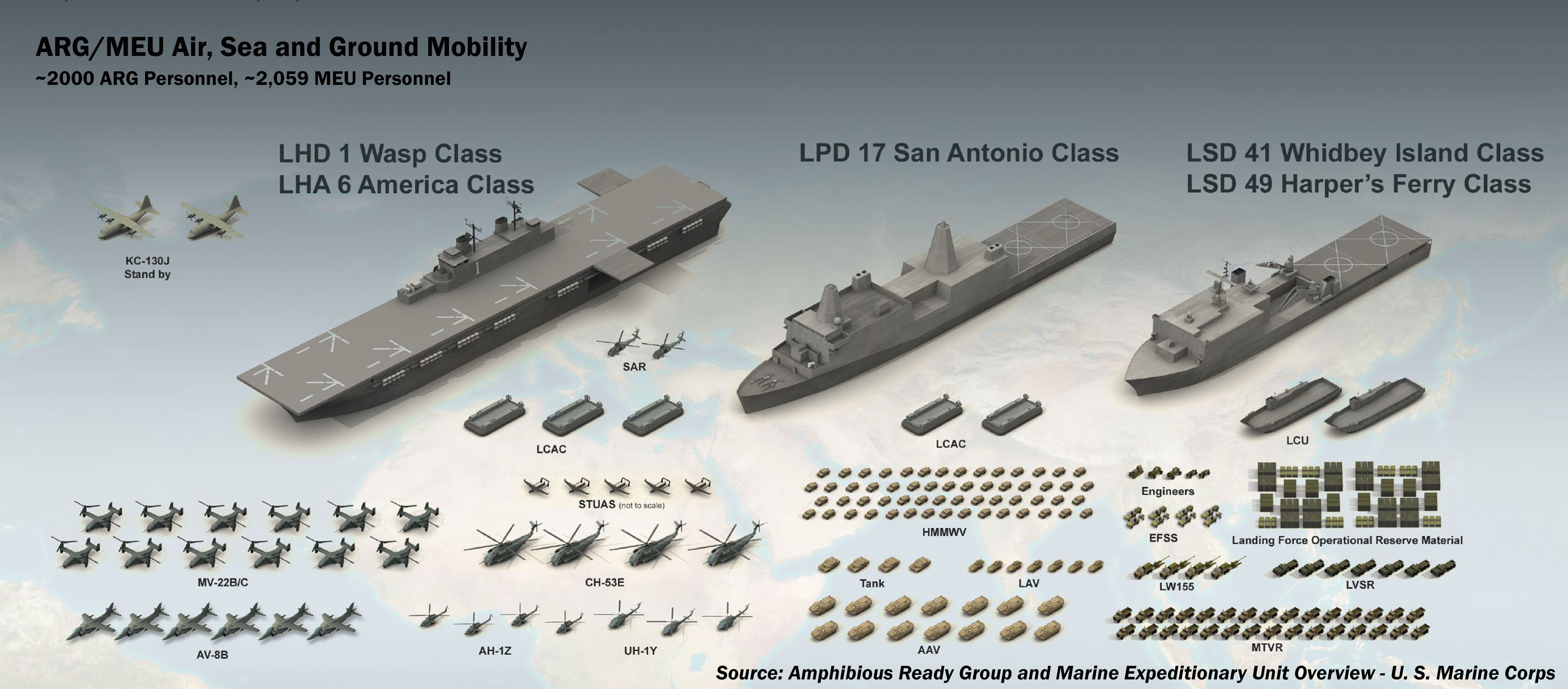
The Navy can add additional resources to the ARG and form an Expeditionary Strike Group (ESG) or add a Carrier Battle Group (CVBG) – or two…
With 70% of the earth’s surface covered by water, the ARG provides the ability to forward deploy a very capable “base” offshore in proximity to a nation of interest. Smaller nations without the resources to scan the seas may never see them coming.
More advanced adversaries may be aware that the ARG/MEU is in the vicinity – and think twice about their activity. Granted, the ARG/MEU most typically break into the news cycle while providing humanitarian relief or during exercises with coalition forces worldwide.
Seen or unseen, expect them to be at the heart of any global crises; intercepting illegal weapons shipments on vessels; deploying “elements” to support ongoing military operations around the globe; evacuating Americans from a country that falls into chaos; or major theater war. If one wants to be at the heart of the action – the U.S. Marines is a great place to start.
The 22ndMarine Expeditionary Unit (MEU) forms the Marine component of this force and consists of;
Command Element (CE):22ndMarine Expeditionary Unit, Marine Corps Base Camp Lejeune, NC.
Ground Combat Element (GCE):1st Battalion, 2nd Marines (1/2) is an Infantry battalion based at Marine Corps Base Camp Lejeune, NC.
Aviation Combat Element (ACE):Marine Medium Tiltrotor Squadron (VMM) 264 (Reinforced) “Black Knights.” They belong to the 2ndMAW, MAG-26, Marine Corps Air Station New River, NC. Aircraft types operated include; AV-8B Harrier II, MV-22B, CH-53E, AH-1W and UH-1Y.
Logistics Command Element (LCE):Combat Logistics Battalion 22(CLB-22) is a USMC logistics battalion Marine Corps Base Camp Lejeune, NC.
The VMM-264 (Reinforced) is a composite squadron specifically for the MEU ACE. The ACE is brought together from units where crews have honed their platform specific capabilities. Embarked – they work as one aviation squadron, as one MEU, as one ARG/MEU.
The Marine Expeditionary Unit as described by General James F. Amos, U.S. Marine Corps.;
Forward-deployed amphibious forces remain a uniquely critical and capable component of our national strategic demands for forward presence, crisis response, power projection and theater security cooperation. The Marine Expeditionary Unit (MEU) and associated Amphibious Ready Group (ARG) provide the Geographic Combatant Commanders with forward-deployed, sea based, expeditionary forces that can operate across the range of military operations. Capable of enabling joint, interagency and coalition forces seamlessly integrating with Special Operations Forces, no other type of force possesses these capabilities together with the ability to sustain itself logistically for significant periods of time.
Operating as a team, the ARG/MEU provides operational reach and agility, as well as assured access for joint force in major contingencies. It is ideally suited to operate forward and from over the horizon to protect America interests.
“Amphibious Ready Group AND Marine Expeditionary Unit Overview” U.S. Marine Corps.
We land on the Kearsarge moments before a Visit, Board, Search and Seizure(VBSS) exercise.
The operational pace is high and resources are gathered topside. VBSS is one of the many mission sets the Kearsarge ARG and 22nd MEU perfect prior to deployment.
VMM-264 (Reinforced)the “Black Knights” have their machines at the ready, along with US Navy MH-60S Knighthawks from HSC-26 of Norfolk, VA.
Procedures ensure the highest degree of safety possible. Given the nature of the activity – danger is never far away. I observe activity on a hot, but otherwise perfect day. Add inclement weather, pitching decks and night operations – and one may grasp what risks these young men and women of the Marines and Navy face. The sea and many forward deployments are inhospitable, and unforgiving.
Fast roping, Special Patrol Insertion/Extraction (SPIE), hot arrivals and departures – all are trained too and perfected. Man and machine are put through grueling paces by our nation’s finest so they can serve as first responders to any number of global crises. Maintenance professionals from VMM-264 work tirelessly on board to ensure all platforms are ready to go.
A combination of instructions bark from the loudspeakers aboard the Kearsarge. Simulated threats are identified, and timely safety reminders regarding deck activity are made. Today, the deck is lightly loaded with only a handful of active and parked ACE assets. During deployment the parking area of the deck will be packed with the aircraft, fitted together like a jigsaw puzzle.
The AH-1Ws launch (I suspect Harriers would be up in the air already if this took place near hostile shores). Regardless, the message is clear, firepower is up in the air long before the Marines of BLT 1/2 arrive on the scene. The MH-60 Knighthawks from HSC-26 launch next – with observers and Marines.
The CH-53E launches and somewhere out of sight an MV-22B travels with a full complement of Marines. Additional assets may have launched from other members of the Kearsarge ARG, the USS Arlington (LPD-24) and USS Fort McHenry (LSD-43).
The USMC is about many things, but perhaps at the heart of it is “putting warfighters on the ground, wherever that ground may be.” VMM-264 does their part.
Seasoned pilots operating capably night or day in good and poor weather and in both friendly and hostile space. It is their job to ensure the safety of the Marines, execute the plan and move those warfighters to and from theater.
A handful of Marines (BLT 1/2) wait on board the Kearsarge, extra’s at the ready if required. They are geared up and wait patiently. As the afternoon passes they become aware that their presence is not required for the VBSS. The disappointment is accepted, but palpable.
The blend of young and seasoned Marines joined the service for the very reason; to be “first in.”
While none I come across desire war, they are ready and to a Marine desire to be at the epi-center of the action.
They are polite, disciplined and focused. They are examples of America’s ultimate wealth – our youth. It is a privilege to encounter them as friend and to know they are forward deployed around the globe to respond to any number of global crises.
The capabilities of the ARG/MEU in its current state are impressive and more than adequate. However, the Marines are not at rest. The world is changing rapidly, and the Marine Corps is transitioning to platforms that increase their capability exponentially.
These upgrades are driving by Integration, Resiliency, Evolution, Maneuverability, Scalability, Competence and more.
Put simply, the Marines are evolving to ensure success in contested environments against peer and near-peer competitors.
The 2018 Marine Aviation Plan details the impressive aviation upgrades coming;
The AV-8B Harrier II will have its sundown by 2026 when the transition to F-35Bs is complete. The F-35Bs bring a quantum leap in situational awareness, ISR, tactical air capability, interoperability with Navy, Air Force, Army and Coalition force weapons systems.
Last year, the U.S.S. America (LHA-6) America Class of amphibious assault ship with emphasis on airborne assault went on its first deployment, providing the option to focus on amphibious assault from the air.
Today the Essex ARG / 13thMEU is on deployment with the F-35B.
It is early in the introduction of the F-35B and deployments such as these are as much an integration exercise as a combat ready deployment.
The AV-8Bs of VMM-264 (Reinforced) are proven and capable to support the ARG/MEU during the transition to the F-35B.
They will receive a host of upgrades to enhance capability and operability through until sundown.
The AH-1W gunship is in the process of transition to the more capable and lethal AH-1Z (complete by about 2021). The CH-53K will replace the CH-53E – with an impressive increase in lifting and operational capability.
Around ½ the incming CH53Ks will be operational by around 2025, with the transition complete by 2030.
The introduction of unmanned aircraft systems (VMU) and the platform centric Intrepid Tiger EW packages, communications, ordinance and systems upgrades complete the ongoing transformation to a what is already a lethal expeditionary force.
It all means that Marines will come ashore – at the place and time of their choosing – even if that place is contested and 100’s of miles inland.
When they arrive, they will do so with unparalleled capability.
The featured photo:
ATLANTIC OCEAN (Sept. 2, 2018) The Wasp-class amphibious assault ship USS Kearsarge (LHD3) transits the Atlantic Ocean during the Carrier Strike Group (CSG) 4 Amphibious Ready Group (ARG), Marine Expeditionary Unit (MEU) Exercise.
The Kearsarge ARG and 22nd MEU are enhancing joint integration, lethality and collective capabilities of the Navy-Marine Corps team through joint planning and execution of challenging and realistic training scenarios. CSG 4 mentors, trains and assesses East Coast units preparing for future deployments (U.S. Navy photo by Mass Communication Specialist 2nd Class Megan Anuci/Released)
The slideshow highlights the F-35B onboard USS Essex.


